Elizabeth

Born: Kolomenskoe, Moscow, 19 December 1709
Died: St. Petersburg, 25 December 1761 (5 January 1762)
Reigned: 1741-1761 (1762)
Coming to power as a result of a palace coup, Elizabeth, the second oldest daughter of Peter the Great, proclaimed that her policies would be a continuation and preservation of the achievements of her father. Elizabeth led a fairly modest life during the time that the country was governed alternately by those descendants of Tsar Ivan (her father's brother): Anna Ioannovna and Anna Leopoldovna acting as regent. In the eyes of these two empresses, who had surrounded themselves with foreign nobles, Elizabeth was a clear and present danger, a rival pretender to the Russian throne. The Imperial Guard loved her, believing that she would continue the work of her great father and save the Russian court and Russian service from foreign domination. And so the Guard brought Elizabeth to power … However, nothing at the time indicated that Elizabeth was destined to rule the Russian Empire for the next twenty years.
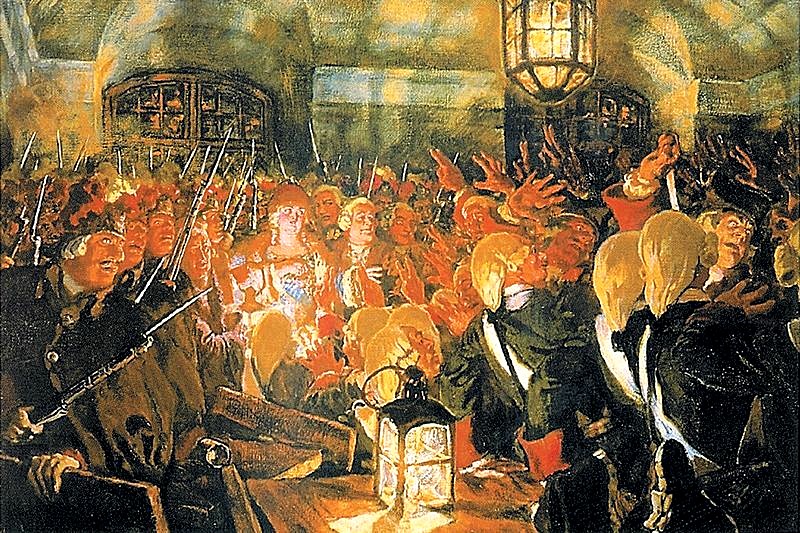
Elizabeth spent her childhood and youth in the vicinity of Moscow, in the villages of Preobrazhenskoe and Ismailovo, thanks to which she retained a life-long attachment to Moscow and its surroundings. Her education was restricted to dancing, social etiquette and French: it is said that, when she was already Empress, she was quite surprised to discover that "Great Britain is an island." After Elizabeth reached the age of majority in 1722, her father made several attempts to arrange her marriage with various members of the royal and ducal houses of Europe. At first, the French King Louis XV came under consideration, but the French rejected this plan due to the obscure origins of Elizabeth's mother, and she was subsequently betrothed to Karl August, Prince of Holstein-Gottorp, who died shortly afterwards. When Catherine I also died, the fate of Peter's young daughter was of little interest to anyone. Plans were made to marry her off to her half-brother Peter II (thereby strengthening succession to the Russian throne by uniting two branches of the Romanov line: the descendants of Ivan and of Peter the Great) but these plans also came to naught.
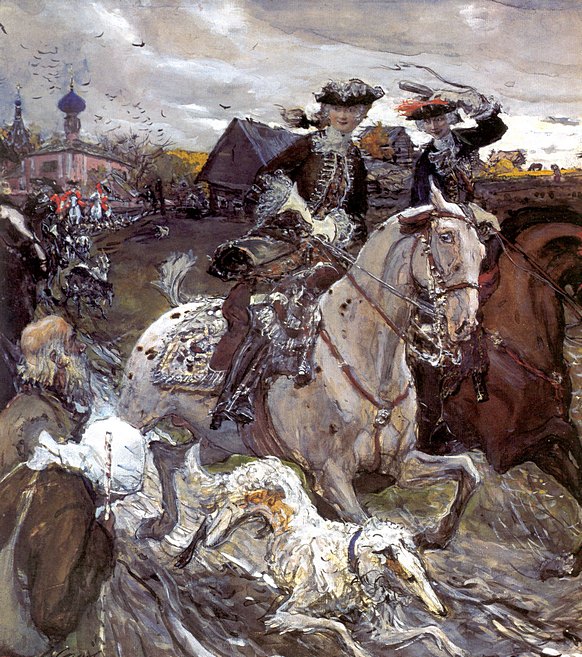
Elizabeth led a quiet, uneventful life, paying from her own means for the education of two nieces. In St. Petersburg, she had a small palace not far from Smolny Cathedral, and on the outskirts of the city, the estate Tsarskoe Selo, which she had inherited from her mother, Catherine I. It should be noted that the Imperial Guard had great sympathy for Elizabeth as the daughter of Peter the Great. Elizabeth was not well-off financially, but with monetary assistance from the French and Swedish ambassadors, the Guard organized a conspiracy, the result of which was that Anna Leopoldovna and the infant Ivan VI were arrested, and Elizabeth was declared Empress. Anna's foreign dignitaries – Munnich, Osterman, Levenvolde, and others – were sentenced to death, but the sentence was eventually reduced to exile.
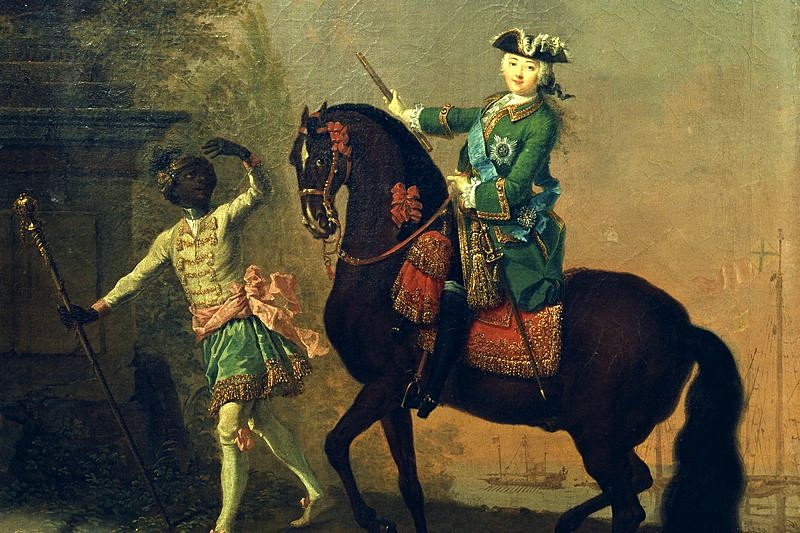
Having obtained power, Elizabeth paid little attention to affairs of state, leaving the daily work of running the country to the nobles and to her advisors. She indulged in entertainments and bathed in luxury. Her coronation ceremony in Moscow with its accompanying festivities featured an unprecedented opulence: there were balls, masquerades, and fireworks, and in the heart of Moscow the Red Gates ("Krasnie Vorota") were built, through which the coronation procession made its way. Throughout the course of her long reign, Elizabeth continued to show a passion for balls, masquerades, and fireworks, and spent several hours a day on the performance of her toilet. The Empress was renowned for the fact that she never wore the same ball gown twice and she would change attire as many as six times a day. At the time of her death, her wardrobe included 15,000 dresses and several thousand pairs of shoes.
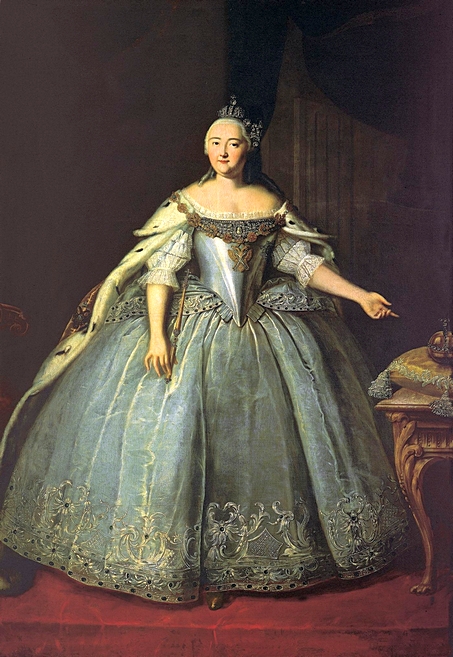
The center of court life became the imperial residences outside St. Petersburg. Elizabeth turned Tsarskoe Selo, which she had inherited from her mother, into a brilliant baroque residence: the white-blue-gold façade of the Catherine Palace glittered with abundant gilding, not all of which has been preserved. At Peterhof, lavish bucolic feasts were celebrated in the fresh air.
The era of the Empress Elizabeth has left a deep mark on the history of Russia. Elizabeth felt called on to continue the work of her renowned father. In the administration of the country, the role of the Senate and the Colleges (an early form of government ministry established by Peter the Great) was once again strengthened, whereas the Cabinet of Ministers was abolished. The coup which had brought Elizabeth to power had been bloodless and she kept the promise made upon her accession that she would not sign a single death sentence (which significantly differentiated her reign from that of her predecessors). The first Russian banks were founded, and internal customs duties (on the transport of goods between different provinces of Russia) and other petty charges were abolished, which helped create an all-Russian market and boosted domestic trade. Tax reform helped to fill the government coffers, although the Seven Year War with Prussia put severe strain on the Russian Treasury toward the end of her rule.
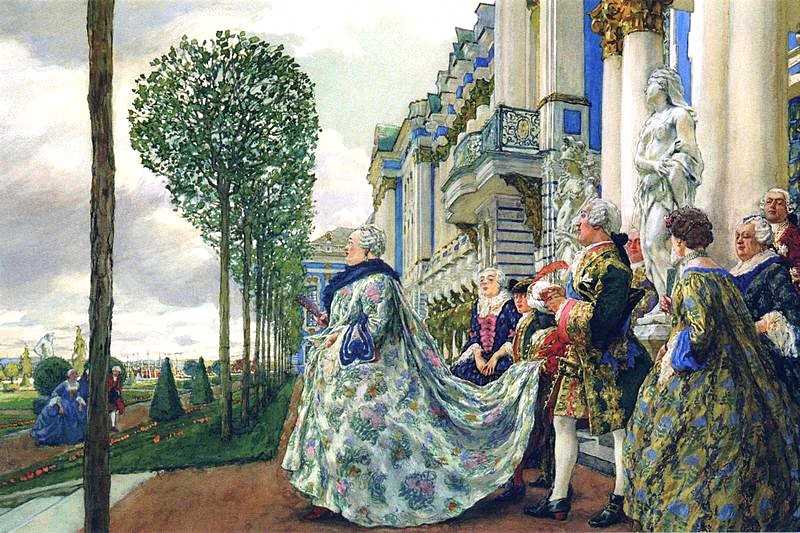
During Elizabeth's reign the University was founded in Moscow and in St. Petersburg, the Academy of Arts was established, Mikhail Lomonosov's research in a variety of scientific fields (physics, geography, chemistry, astronomy) was encouraged, as was his work on inventing Russian mosaic techniques, and likewise, the research of the chemist Dmitry Vinogradov, who produced the first Russian hard-paste porcelain. Work began on the organization of the Imperial theatres.
In the late 1750s, Elizabeth's health started to worsen, and she died on 25 December 1761. She is buried in the Cathedral of the Peter and Paul Fortress, where her grave can be seen not far from those of her parents, Peter the Great and Catherine I.

